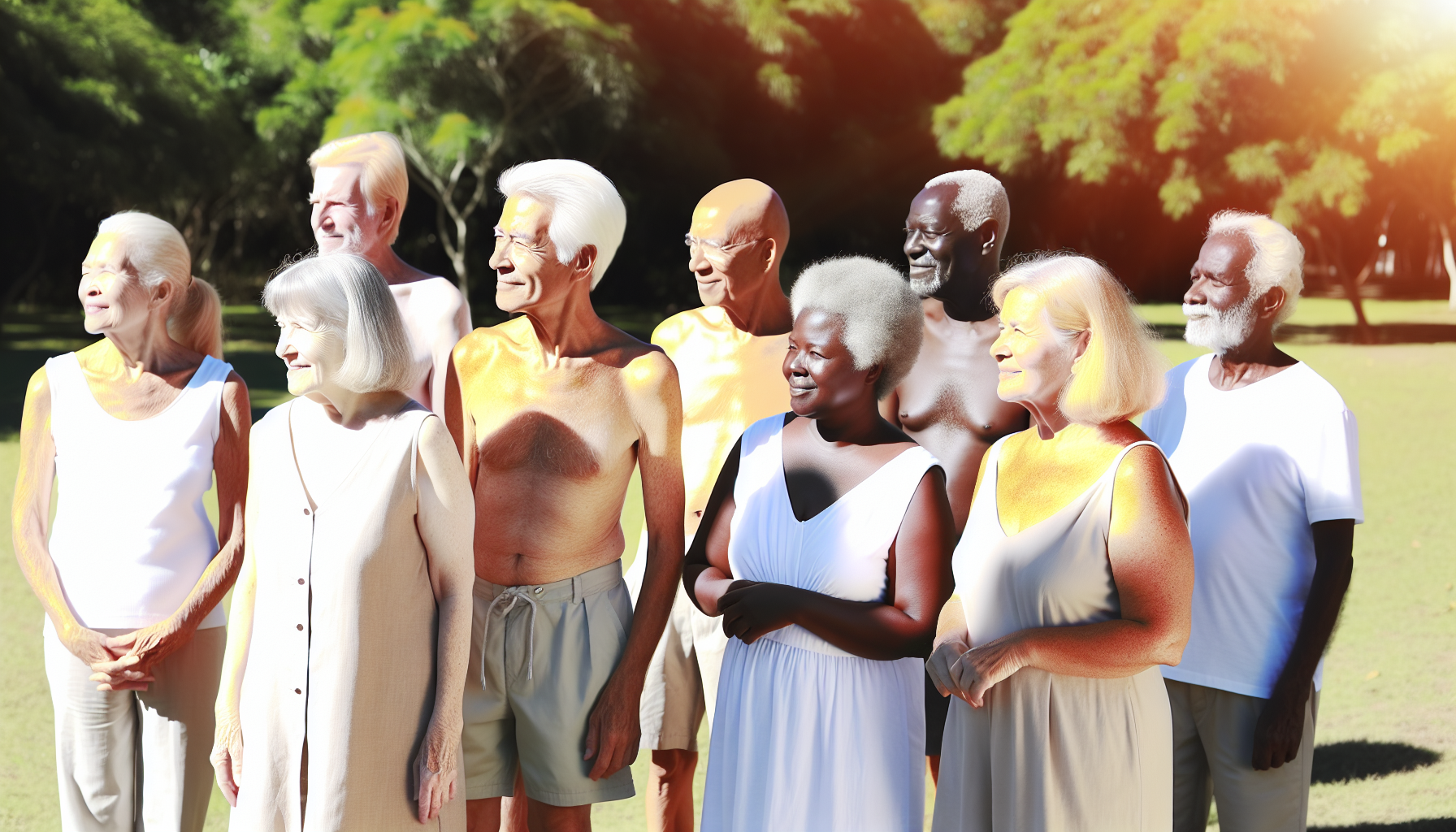Light has been a fundamental force in shaping human evolution, influencing our biology and behavior for millions of years. From our ancient ancestors to modern-day humans, the impact of light continues to play a crucial role in our development and daily lives. This article explores the profound effects of light on human evolution and its ongoing influence on our species.
Our Evolutionary Journey: From Nocturnal to Diurnal
Humans have been diurnal creatures for millions of years, with our ancestors active during daylight and sleeping at night. This lifestyle likely dates back to the earliest primates, which evolved from nocturnal mammals after the dinosaurs’ extinction. The shift from nocturnal to diurnal behavior was a significant evolutionary step that set the stage for many of the adaptations we see in modern humans.
The Rise of Upright Posture
One intriguing theory suggests that standing upright may have been driven by the need to reduce exposure to harsh sunlight. When our ancestors began to walk on two legs, less of their body surface was directly exposed to the sun’s intense rays. This adaptation provided protection from the harsh sunlight of ancient African savannas, allowing our ancestors to forage and hunt during the day more efficiently.
The Evolution of Skin Color
The evolution of skin color is closely linked to sunlight exposure. Dark skin protected against the breakdown of folate (vitamin B9) and DNA damage caused by UV radiation in ancestral climates. This adaptation was crucial for survival in regions with intense sunlight.
However, as humans migrated to temperate zones with weaker light, a new challenge arose. In these areas, humans evolved lighter skin to allow more UV light for vitamin D production. This adaptation came with a trade-off, as lighter skin reduced protection against sun damage. The diversity of human skin colors we see today is a testament to the complex relationship between light and human evolution.
Hair Texture: A Natural Sunscreen
The evolution of hair texture may also be linked to sun protection. Curly hair may have provided additional insulation against the hot sun, offering a thicker layer of protection compared to straight hair. This adaptation could have been particularly beneficial for our ancestors living in hot, sunny environments.
The Influence of Light on Our Internal Clocks
Circadian Rhythms: Our Ancient Timekeepers
Humans’ 24-hour clock is deeply ingrained in our evolutionary history. Our circadian rhythms have been shaped by millions of years of exposure to natural light cycles, making them difficult to alter. These internal timekeepers regulate various physiological processes, including sleep-wake cycles, hormone production, and metabolism.
The Impact of Artificial Light
With the advent of artificial lighting, humans have partially decoupled from natural light-dark cycles. However, our bodies still respond strongly to natural light cues. The widespread use of artificial lighting has led to rapid changes in human biology and behavior, some of which may have unintended consequences.
Modern Challenges: Light in the 21st Century
The Rise of Myopia
One of the most significant impacts of modern lighting practices is the increased prevalence of myopia (short-sightedness) in recent decades. Reduced exposure to natural light and increased time in artificial light can exacerbate myopia, particularly in children and young adults. This trend highlights the importance of balancing our exposure to natural and artificial light sources.
Future Considerations: Light Beyond Earth
As we look to the future, the role of light in human health and development takes on new dimensions. For example, potential human settlements on Mars would need to carefully manage light exposure to maintain healthy circadian rhythms. This consideration underscores the continued importance of light in shaping human biology and behavior, even as we venture beyond our home planet.
Frequently Asked Questions
How has light influenced human evolution?
Light has shaped various aspects of human biology, including our skin color, hair texture, and circadian rhythms. It has also influenced our behavior, such as the evolution of upright posture and diurnal activity patterns.
Why do humans have different skin colors?
Skin color evolved as a balance between protection from UV radiation and the need for vitamin D production. Darker skin offers more protection in sunny regions, while lighter skin allows for more vitamin D synthesis in areas with less sunlight.
How does artificial light affect our health?
Excessive exposure to artificial light, especially at night, can disrupt our circadian rhythms, potentially leading to sleep disorders, metabolic issues, and other health problems.
Can light exposure influence eyesight?
Yes, recent studies suggest that reduced exposure to natural light and increased time in artificial light environments may contribute to the rising prevalence of myopia, particularly in children and young adults.
How might light affect future space colonization efforts?
Managing light exposure will be crucial for maintaining healthy circadian rhythms and overall well-being in environments like Mars, where natural light cycles differ significantly from Earth’s.
Conclusion
The profound impact of light on human evolution cannot be overstated. From shaping our physical characteristics to influencing our daily rhythms, light has been a constant force in our development as a species. As we continue to adapt to modern environments and look towards future challenges, understanding and respecting our evolutionary relationship with light will be crucial for maintaining our health and well-being.
As we move forward, balancing our exposure to natural and artificial light sources will be essential. By acknowledging the importance of light in our evolutionary history and its ongoing influence on our biology, we can make informed decisions about our environments and lifestyles to support our health and adapt to the changing world around us.
Source: Science Alert – Light Shaped Human Evolution, And It’s Still Changing Us Today
